During these digital times, many people have gone online to earn their living.
But while there are lots of ways to make a decent income legally through the internet, affiliate marketing remains a prevalent and preferred means of earning income.
And the most cost-effective way to increase your affiliate income is via email marketing. Which is what we’re going to be looking at in this article. Starting with a few basics.
Page Contents
What is affiliate marketing?
Affiliate marketing is an advertising model where a company compensates its affiliates who successfully generate traffic or leads to its products/services. The affiliate signs up and promotes the company’s products/services and earns a profit from each sale made. Sales are tracked via unique affiliate links.
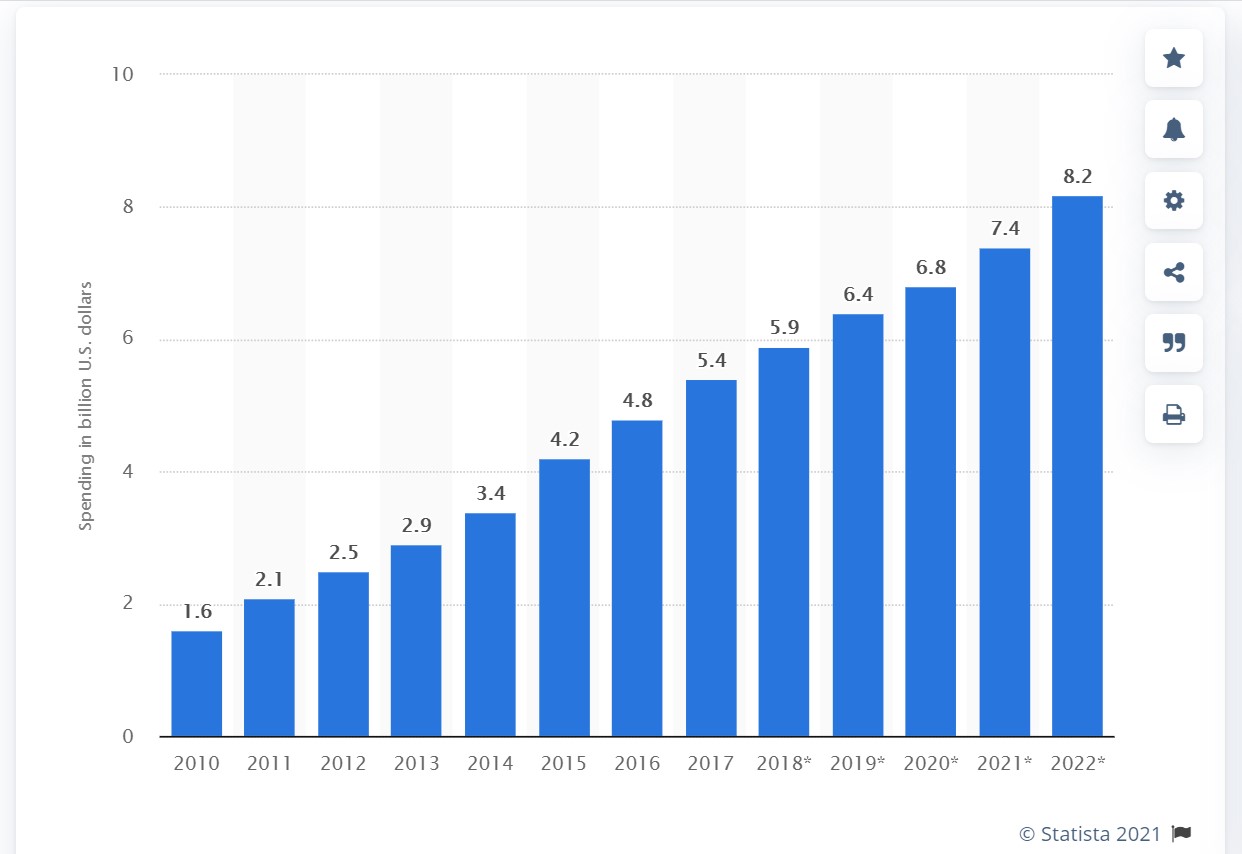
Consumers in the US have spent increasing amounts via affiliates since 2010. By 2022, the value is estimated to reach $8.2 billion. Which goes to show that affiliate marketing is going from strength to strength.
Understanding email marketing
As the name suggests, email marketing uses email to promote products or services while developing relationships with potential customers. It is essentially direct mail done electronically instead of using a postal service.
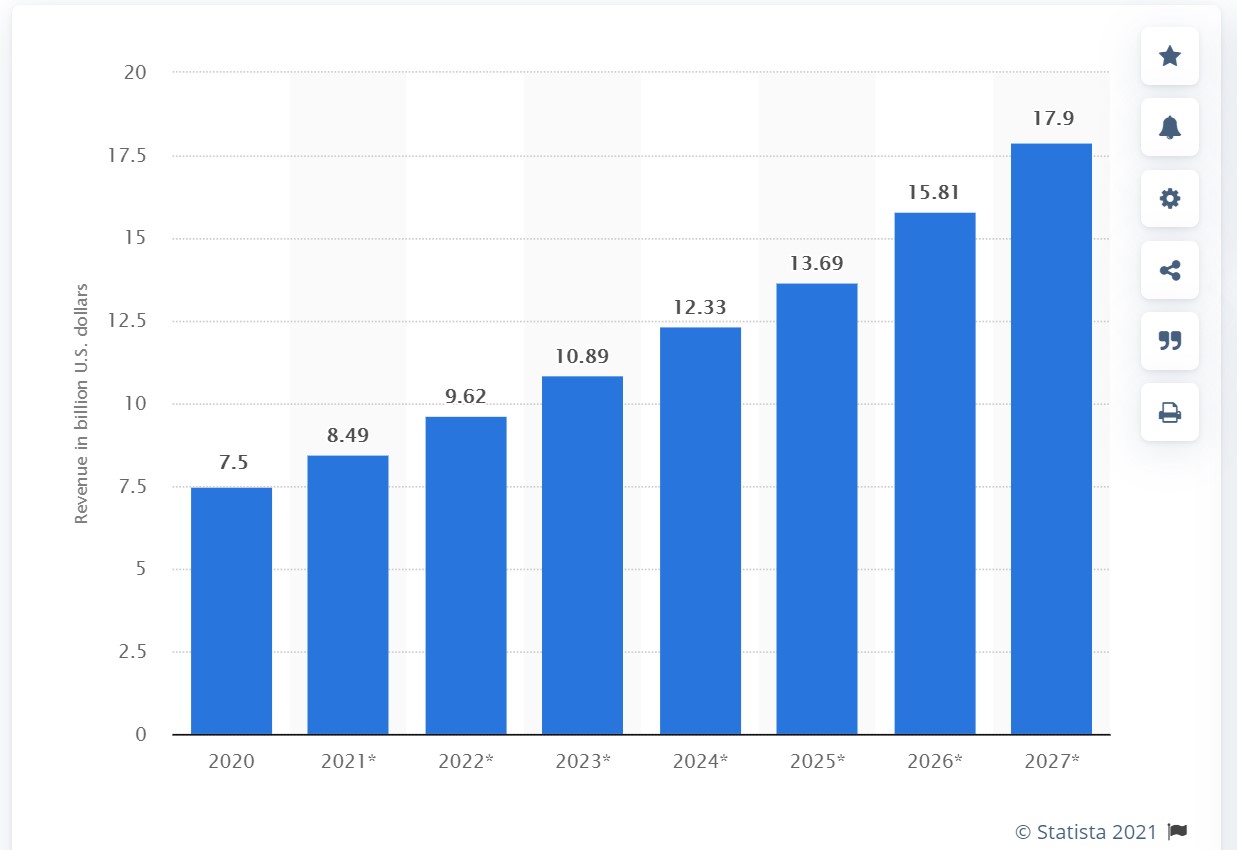
In 2020 the global email marketing market was valued at $7.5 billion. And it’s expected to increase to a whopping $17.9 billion by 2027. Which goes to show how valuable email is as a revenue-generating channel.
And that’s because among the many marketing channels available, emails can be personalised and tailored to target the right audience. On a more basic level, email marketing provides a convenient and easy way to keep in touch with customers.
This is why affiliate marketers should be including email marketing in their strategy.
How to increase your affiliate income via email marketing
There are various ways that affiliate marketers can boost income, and one of the most potent tools in your arsenal is email marketing. The relatively low cost and high outreach potential of this medium make it an excellent option.
But to make money from email marketing, you need to follow best practices. And that’s what we’re going to look at now.
1. Choose the right email marketing tool
If you’re just getting started with affiliate marketing, it can be tempting to use a free email service provider like Gmail or Outlook. It’s free, after all, and likely to be a platform you’re familiar with from your own personal use.
But email marketing with Gmail and other ESPs come with a host of drawbacks. And it’s not recommended.
Instead, choose an email marketing tool that provides you with everything you need to grow your list, manage contacts, automate campaigns and create professional-looking emails.
And make sure the email marketing tool welcomes affiliate marketers. Because not all do. Some ban affiliate links outright.
A good place to start is EmailOctopus. It’s affiliate marketing friendly and affordable, with prices starting from $24/month for up to 5,000 subscribers. And for those in the early days of building their mailing list, there’s a free Starter plan for up to 2,500 subscribers.

2. Build your mailing list organically
Once you’ve selected your email marketing tool, you need to start building your mailing list and collecting email addresses of people that want your content and product recommendations.
When building a list from scratch, you need an effective lead capture strategy. This involves creating lead generation forms on your website, and relevant pop-ups or exit intent forms on different pages on your website. For more effective forms, keep them short and the message relevant to the product subscribers are interested in.
Also, reward your subscribers for giving you their contact details. You can do this with a lead magnet, such as a free downloadable resource. This provides that extra nudge to get website visitors to give you their email address. Take note that understanding the intent of your website visitors is essential to growing high-quality email lists.
Here’s a good example from Blogging Wizard:
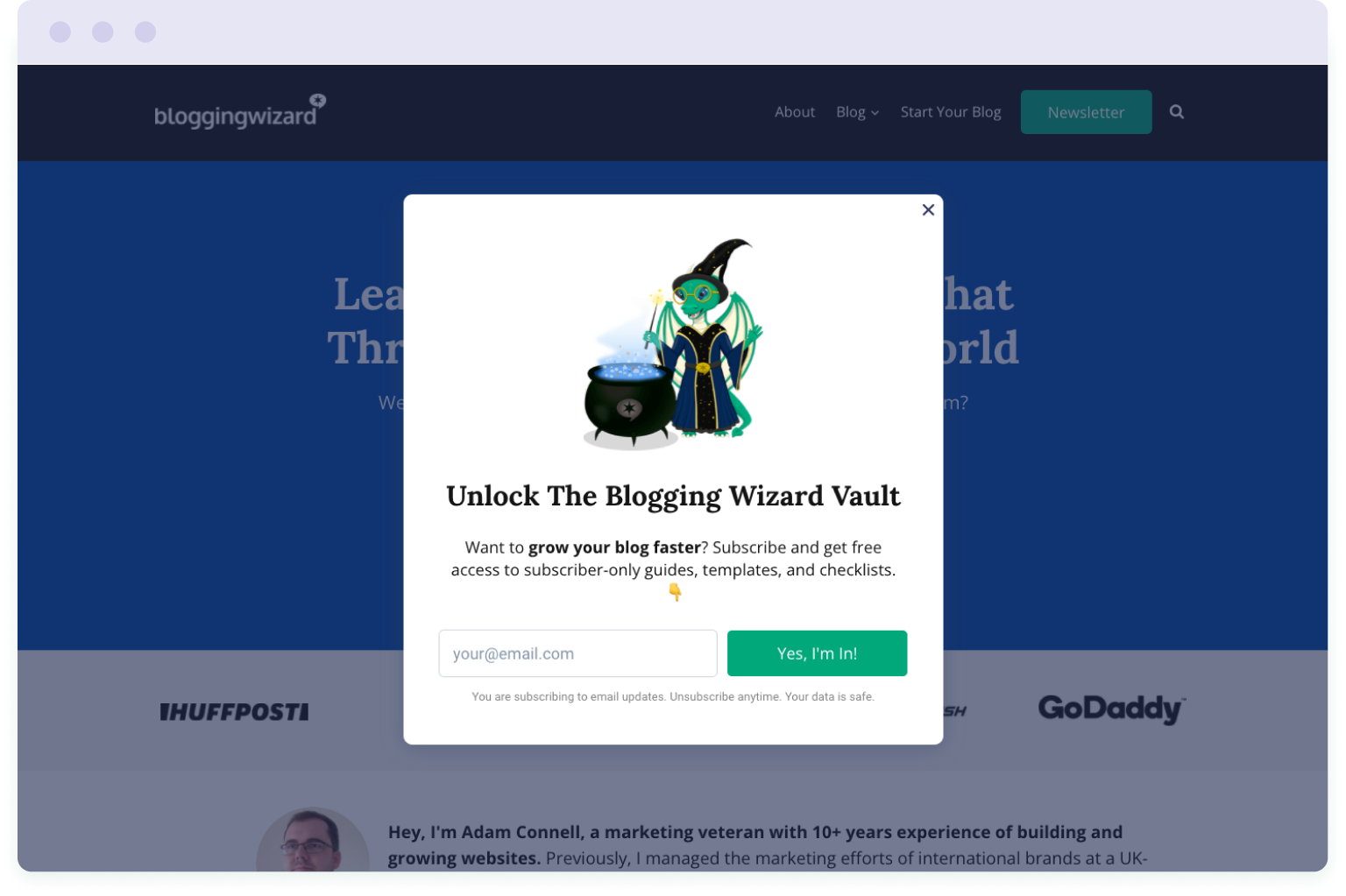
A pop-up form is used to offer website visitors access to “subscriber-only guides, templates and checklists” – a bundle of lead magnets relevant to the website’s niche. And therefore, visitor’s interest.
Lastly, although it may be tempting, never buy an email list as your effort can go to waste – you have no idea where it originated and could end up marked as a spammer. Plus, most ESPs do not allow bought lists to be used in their platforms.
3. Segment your email subscribers
Once you’ve started to build your email list, it’s time to look at ways you can effectively segment your subscribers.
Segmenting your email subscribers will mean you can create targeted emails for them. This is crucial as segmentation leads to higher open rates and more sales conversions.
One of the quickest ways to fail at email marketing is to keep sending emails that bear no relevance to your customers’ interests. Therefore, make sure you segment your contacts according to their preferred products, industries, interests, geographical location, and more. After which, you can create separate email campaigns for each segment along with separate drip flows for your subscribers.
4. Craft your emails according to your goal
Writing the content for your marketing email is perhaps one of the most challenging steps of the process. It’s more than simply a matter of throwing product specifications at readers. Instead, you need to create content that captures attention and whets appetites in the shortest time frame possible.
It’s also important to remember your core objectives when creating marketing email content. You should aim to effectively;
- Build leads and drive sales
- Increase brand awareness for the products you’re promoting
- Engage with customers
Make sure your emails and supporting content includes profitable and relevant affiliate links. But avoid over-populating your emails with too many links as this can potentially dilute the impact of your marketing campaign.
Instead, direct your monetisation efforts carefully and point readers towards the most effective conversion pages possible.
5. Avoid hard selling
Most people don’t respond well to direct sales pitches in emails, especially if you consistently bombard them with the same sales tactic.
Pressuring your prospects to buy the product won’t cut it either. Don’t over-sell as this can turn off your subscribers.
Instead, take a more conversational approach to avoid looking like an unfeeling corporate making a sales pitch – relate the content to your readers as far as possible for the best pitch. Focus on the benefits that your prospects will receive and how their problems can be solved. After all, it’s all about your subscribers, isn’t it?
Take this example from the Wirecutter newsletter:
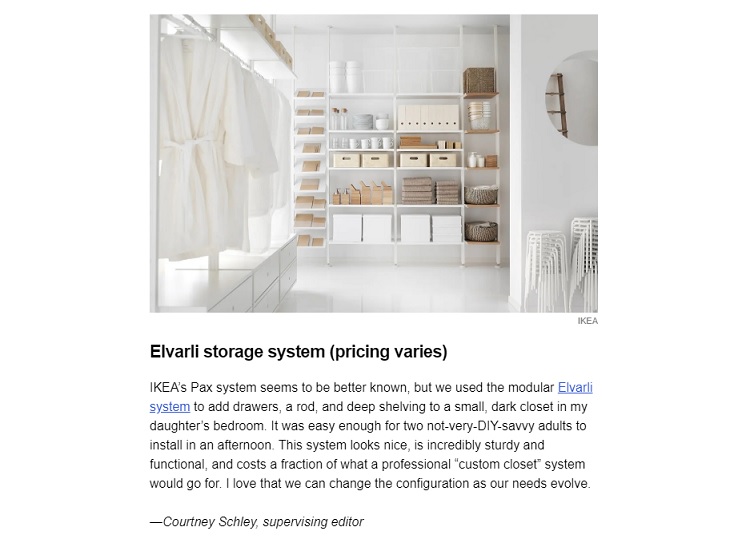
The email includes a review of a piece of Ikea furniture with an affiliate link to the product. But to help relate the product to the reader, the review is a personal one, with the writer mentioning where they use the furniture and how easy it was to set it up – even for “two not-very-DIY savvy adults”.
It reads as though a friend or colleague was sharing their opinion, rather than a forceful sales pitch from an affiliate marketer. And this is what you should be aiming for with your own content.
6. Understand the different types of emails you can send to your audience
Generally speaking, there are three types of emails affiliate marketers can utilise. Understanding the purpose of these different email types can help you craft the right content for each of them.
Sales/promotional emails
These are the emails that we usually get in our inboxes. They typically contain sales information and promotional offers. These emails can be as simple as informing your audience of any new products you have on your shelves, and if they click the link, purchase within a specific time, they get a discount or free shipping.
These emails are what you use when you want to introduce a new affiliate product to your audience. Though they tend to work best when pieced together with other types of emails in a sales launch sequence.
We don’t recommend sending promotional emails until after you’ve developed a strong enough bond with your subscribers.
Relationship-building emails
For affiliate email marketing campaigns to succeed, it’s important to present customers with insightful content that they find useful. Such emails give a more human element to your business and shows that you want to build a relationship with the subscriber that goes beyond just wanting to make money from them.
This helps build loyalty and customer retention. So focus on content that your reader expects to receive. This can be delivered in a weekly newsletter with new industry updates and other relevant information.
Alternatively, you can build a relationship with your audience by asking them directly for feedback. That’s what Adam from Blogging Wizard does with his emails:
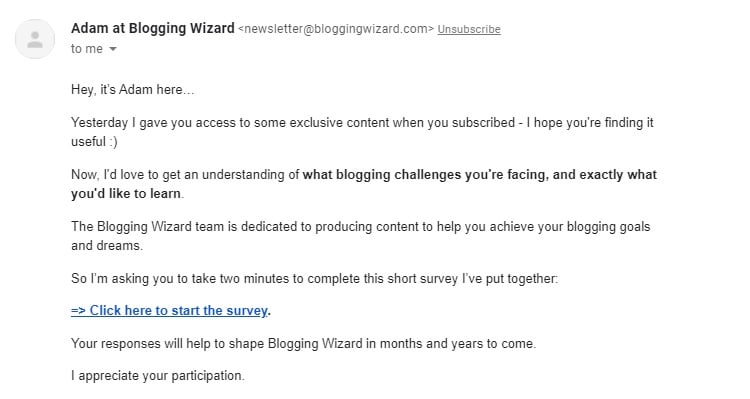
In short, these emails nurture the relationship with your subscriber and if done right, bring value to your customers and help you to get to know them better.
Educational emails
Instead of pitching products in your email, take a utility-based approach towards the sale. One example of this is outlining a problem that’s commonly felt by your audience and then suggesting an easy or effective solution. You can then portray your affiliate product or solution as the “hero” that will save the day.
Take this example from Bitcatcha:
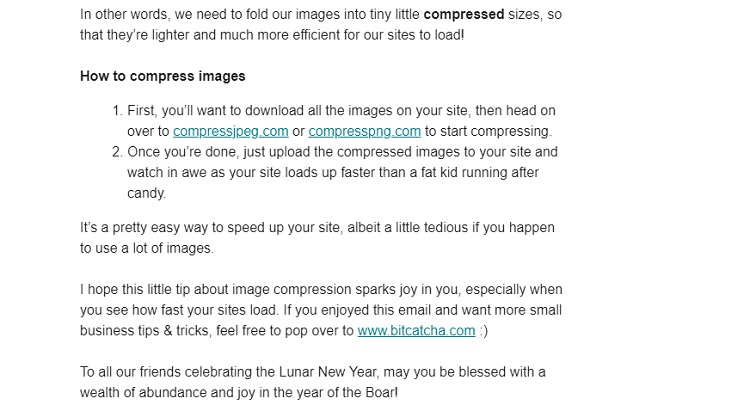
The email teaches readers how to compress images for faster website load speeds. And in the process they recommended two particular products that help.
This is a great way of promoting affiliate links while providing value to your audience by educating them on how to achieve a specific goal.
7. Pay attention to the overall buyer journey
Your affiliate marketing strategy needs to cover the entire buyer journey, from awareness to consideration and decision-making. And so do your emails.
Here’s how you can match your email campaigns with the different stages of the buyer journey:
- Awareness – introduce yourself and make your audience aware of their underlying issues by educating them.
- Consideration – help them find solutions to their problems by sending high-quality resources, like guides, white papers, and case studies. Of course, make sure that your affiliate products and services are relevant.
- Decision-making – nudge them to buy by sending promotional emails with the right sales pitch.
8. Sweeten sales with bonuses
Offering a bonus when you’re promoting a product can help increase sales as the bonus gives the customer an extra reason to buy now. Examples of a sales bonus include free additional resources, a bundle of extra discounts, or access to useful content.
When deciding on a bonus to offer, it must appeal and be relevant to your audience. As such, you have to comprehend their pain points and what they want. Then you can craft a compelling bonus that hits all the right spots.
Limited-time bonuses are effective because they create a sense of urgency – nobody wants to pass up a fantastic deal. And FOMO (fear of missing out) is an effective marketing psychology hack.
Bonuses also help add value as they make customers believe that they’re getting more than their money’s worth.
9. Monitor your affiliate email marketing performance
Like with any of your marketing efforts, you’ll need to monitor the results of your affiliate email performance. You want to make sure you’re doing it right, so tracking and analysing your prospects’ response is essential if you want to make a decent affiliate income.
This is because emails, at times, do not perform as you expect them to, so in order to improve performance, you’ll need to monitor:
Open rate
This is a crucial metric to monitor. Your audience has to open your email in order to read what’s inside. Track the open rate as it tells you the percentage of people who actually opened your email.
This is computed by dividing the number of opened emails by the emails that were delivered. Remember, to increase the chances of your subscribers opening your email, you’ve got to have a strong subject line to entice them to do so.
Click-through rate
Click-through rate is another metric that measures the success of your email campaigns. This is typically the percentage of recipients that clicked on a link in your email and is calculated by dividing the number of clicks by the number of emails delivered.
You can also get the total number of clicks your affiliate link obtained from your affiliate partner program dashboard.
Referrals and conversion rate
As an affiliate marketer, your referrals are linked to your conversion rate, which is the percentage of people that purchased after clicking your affiliate link in the email they received. Of course, you’d want to know how many people read your email, clicked your affiliate link, and decided to make a purchase.
The conversion rate also tells you how well you persuaded people to buy the affiliate product you’re promoting. As such, you want a good conversion rate to increase your income.
Wrapping up
To be a successful affiliate marketer, you need to promote quality products to the right audience because demand drives sales. However, you have to create this demand and grow your traffic so that your audience buys through your links.
And here we’ve looked at some of the best practices that you can follow to do that with email marketing.
You can use these methods separately or combined; whatever the case may be, remember to target the right audience and pitch the right content at the right time. Consistently optimise your email marketing campaigns to boost your affiliate income, and soon, you’ll become your customers’ preferred affiliate site.
Author bio
Jason Chow is the Outreach Manager at WebHostingSecretRevealed and a self-professed internet marketer.


No Comments
Leave a comment Cancel